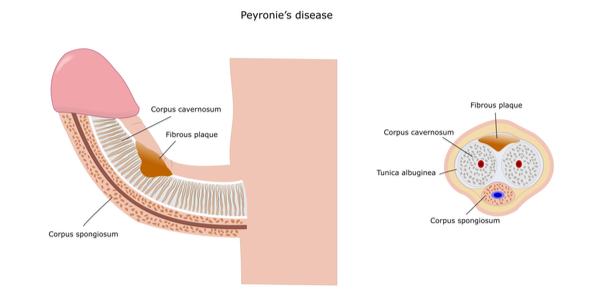Filter Blogs By

Causes and Treatments for Peyronie’s Disease
Peyronie’s disease gets caused when scar tissue forms in the penis. This scarring causes a bent penis instead of a straight erect penis. Most men who have Peyronie’s disease still are able to have sex. But other individuals with this disease experience erectile dysfunction and pain. If you experience severe symptoms or pain with an erection, you should see a doctor for treatments.
The Cause of Peyronie’s Disease
Medical experts don’t know why some men develop Peyronie’s disease. Some researchers think that such types of trauma as bending and hitting the penis. This trauma causes internal bleeding in the penis. You might notice the penis injury, or it might go unnoticed. Other cases of Peyronie’s disease might be genetic and develop over time. Middle-aged and younger men both can get this penis disorder.
Symptoms of Peyronie’s Disease
 Some men might experience symptoms overnight, or the symptoms might develop overnight. These symptoms include:
Some men might experience symptoms overnight, or the symptoms might develop overnight. These symptoms include:
- Scar tissue
- A significant bend to the penis
- Problems getting or maintaining an erection
- Shortening of the penis
- Pain
- Other penile deformities
The only time you’ll notice the disorder is when the penis is erect. But people with advanced Peyronie’s develop plaque inside the penis that causes it to become hard and hamper flexibility. This scarring or plaque also might cause pain and cause the penis to be misshapen during erections.
Pain might go away after a time, but the bending in the penis doesn’t get better or resolve by itself. If your body tends to develop scarring in other areas of the body, it tends to develop Peyronie’s disease, too.
How is Peyronie’s Disease Diagnosed?
Tell your doctor if you have had any injuries to your penis before symptoms started. Your physician might give you an injection to cause your penis to become erect to examine it. An ultrasound or an x-ray might be required for further diagnosis. In the sudden onset of Peyronie’s disease, a biopsy might need to occur.
Do You Need Treatment for Peyronie’s Disease?
Many doctors recommend that you wait for a couple of years before you make the choice for invasive treatment. Sometimes the condition improves on its own. Mild cases of Peyronie’s don’t need treatment as long as you don’t have pain and your sex life isn’t affected.
What are the Treatments for Peyronie’s Disease?
 The first treatment your doctor might try might include medication like Potaba or pentoxifylline. You may also get an injection of verapamil or Xiaflex into the penis’ scar tissue. If these medications don’t work, and if you can’t have sex, your doctor may recommend surgery.
The first treatment your doctor might try might include medication like Potaba or pentoxifylline. You may also get an injection of verapamil or Xiaflex into the penis’ scar tissue. If these medications don’t work, and if you can’t have sex, your doctor may recommend surgery.
One type of surgery removes the plaque from your penis and places a tissue graft in its place. The other type of surgery alters the skin on the side of your penis opposite the plaque. This surgery counteracts the bending that occurs.
In serious cases of Peyronie’s disease, a penile prosthesis gets implanted. This surgery only occurs when a man has both erectile dysfunction and Peyronie’s disease.
Schedule a Consultation
Dr. Jonathan Lazare treats female and male urinary and sexual disorders in Brooklyn, New York. If you experience urinary tract infections, kidney stones, Peyronie’s disease, or other prostate issues, he has vast experience in treating urinary and prostate diseases.
Dr. Lazare remains one of the few urologists who have experience inserting the three-piece penile implant for erectile dysfunction. He practices urology at Manhattan’s Mount Sini Medical Center, the Maimonides Medical Center, and the Methodist Hospital in Brooklyn. Please set up an appointment for a consultation with Dr. Lazare today and find a solution for your urinary problem today.
